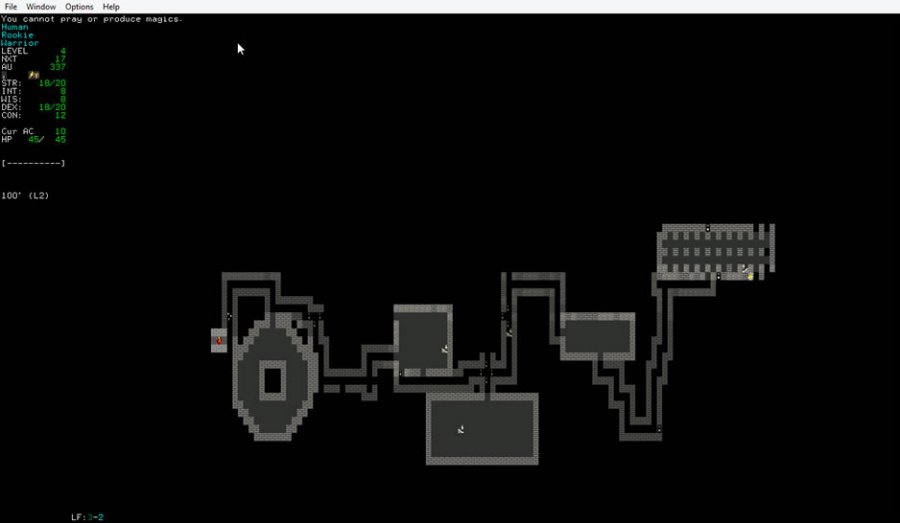
"In the morning you awake, collect your belongings, and set off for the dungeon. "You spend one last night fortifying yourself at the local inn, becoming more and more depressed as you watch the odds of your success being posted on the inn's walls getting lower and lower. The NetHack Guidebook makes clear that the entrance to the dungeon is nowhere near town thus one can guess that this is why leaving the dungeon without the Amulet ends your game: Some Angband variants even let you leave town to find other dungeons and towns. Central to the Angband is the Scroll of Word of Recall, an item that warps you between town and the deepest visited dungeon level. While NetHack players cannot leave the dungeon until they find the Amulet of Yendor, Moria and Angband players can repeatedly visit the town, using the services and shops. Moria added a town just outside the dungeon entrance. It may take weeks to play an Angband character from the beginning to the triumph over Morgoth (or to a late but permanent death).
#ANGBAND MONSTERS LICENSE#
There are many Angband variants the Moria license did not contain explicit permission to modify the game, but many variants predate the relicensing.Īngband is a much longer game than NetHack Angband's dungeon is of effectively unlimited size. The previous license was inherited from Moria and prohibited selling copies of the game, making it impossible for operating systems like Debian to include Angband when selling physical media.
#ANGBAND MONSTERS SOFTWARE#
NetHack changed the game even more with additions like dungeon branches.ĭevelopment of Angband and NetHack continues today - both games have spawned many modified versions and patches, and their respective communities consider them to have developed concrete enough identities of their own to be called vanilla versions, in contrast to variants like ToME and SLASH'EM.Īngband has been free and open source software since January 2009 thanks to the Angband OpenSource Initiative, putting it in a similar situation to NetHack under the NetHack General Public License. Hack, though retaining the Amulet, added features like persistent levels, pets, and shops. Angband lengthened the game and featured the goals of killing Sauron and then Morgoth. Moria deviated from Rogue by featuring a town above the dungeon and by not featuring the Amulet the goal was to kill a balrog. In Rogue, the goal was to obtain an Amulet of Yendor.
#ANGBAND MONSTERS CODE#
Because Rogue did not include its source code and originally ran only on one platform, several Rogue clones came into existence.

Rogue started as a binary for BSD, then a variant of Unix running on VAX hardware. Angband and NetHack also share various other elements from Middle-earth - e.g., lembas wafers, mithril objects, and monsters such as the hobbit and the balrog. The dragon is credited to Angband's ancestor game Moria, while Ents are credited to Tolkien's Lord of the Rings both also appear in Angband, and Middle-earth is also the original source for Morgoth. In the source code (at do_name.c#line888), NetHack credits Morgoth to Angband. The hallucinatory monsters of NetHack include some monsters from Angband.


 0 kommentar(er)
0 kommentar(er)
